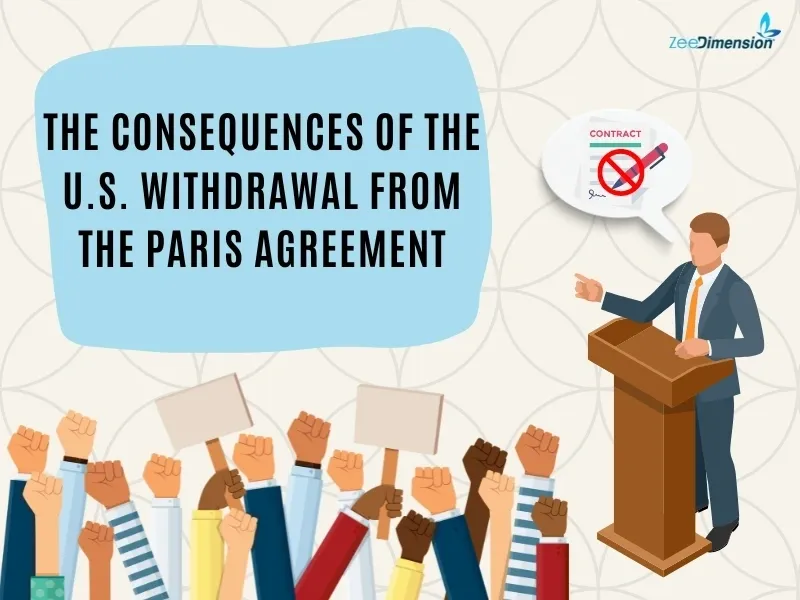
What happened when the U.S. left—and why it matters.
Introduction
In 2017, the U.S. made the decision to formally withdraw from the Paris Agreement, a global effort aimed at reducing emissions and limiting temperature rise. This decision had significant consequences, affecting everything from international leadership to economic and environmental outcomes. Let’s take a closer look at some of the key impacts.
Global Leadership & Diplomacy Setback
The U.S. withdrawal from climate agreements weakened trust in its commitments, allowing China and the EU to take a larger role in climate diplomacy. This shift led some countries to ease their own climate pledges.
Economic & Trade Consequences
U.S. industries risked missing out on the expanding green economy as the EU implemented carbon tariffs, potentially harming U.S. exports. Investment in clean energy sectors like solar, wind, and electric vehicles became uncertain. Meanwhile, fossil fuel interests were given priority, which slowed down the transition to renewable energy.
Environmental & Climate Impact
The U.S. is the second-largest carbon emitter in the world, and its decision to pull out of climate agreements made it harder to reduce emissions globally. This also caused funding issues for climate projects in developing countries. However, many U.S. states and cities kept working on their own to make progress on climate action.
Legal & Policy Uncertainty
Companies faced regulatory unpredictability, affecting long-term investments. The new precedent set was that U.S. climate policy could change with administrations. Inconsistency weakened the credibility of future U.S. commitments. Businesses struggled to plan around the capricious federal climate policies.
Conclusion
The U.S. withdrawal left lasting effects on:
-
Global climate leadership
-
Economic competitiveness
-
Environmental progress
-
Policy stability
A sustained, bipartisan commitment to climate action is crucial for ensuring global resilience. What’s your perspective? How vital is international consistency in shaping effective climate policies?







